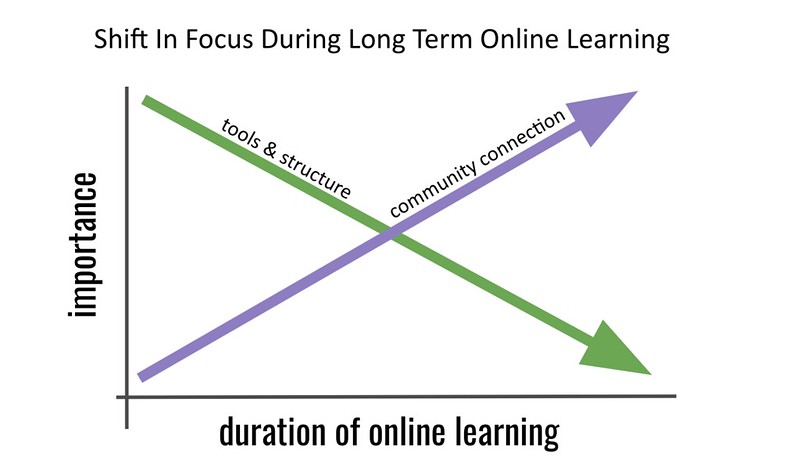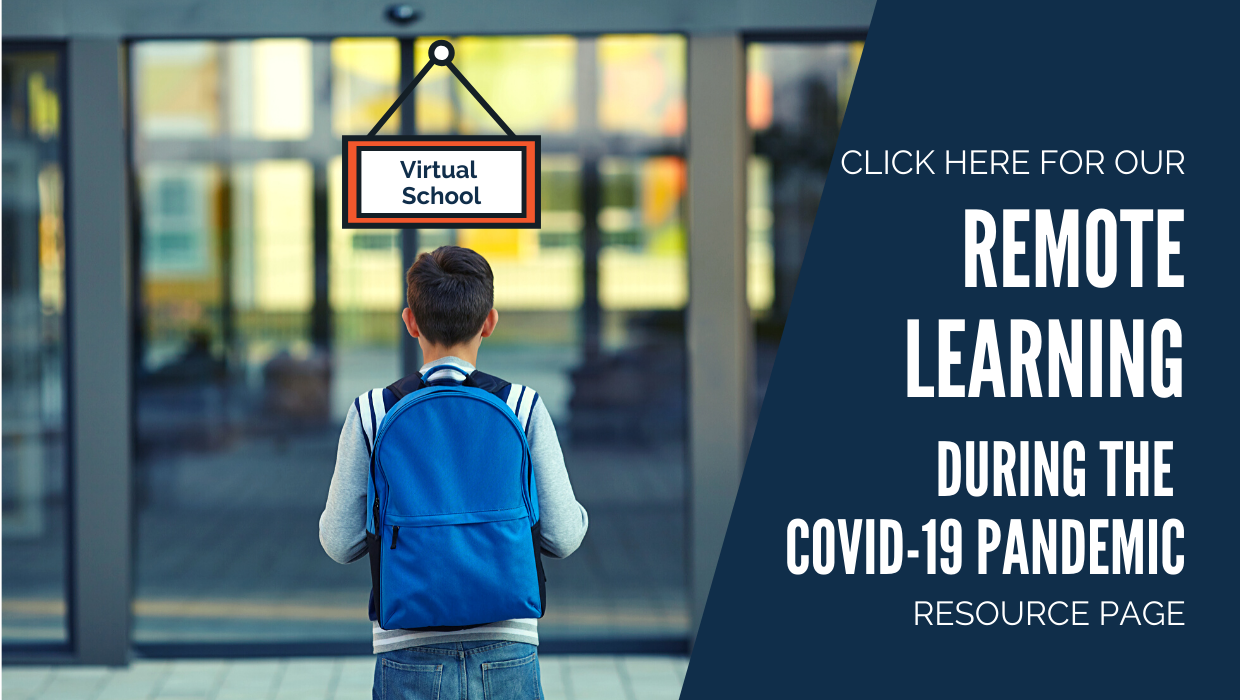It’s hard to believe it’s already been six weeks since schools in China, Hong Kong and Vietnam closed due to COVID-19. As the pandemic spreads, schools in every other region in the world are beginning to follow suit. Although this situation is very stressful, often confusing and pretty scary for all of us, those that are only starting to close now have a huge advantage: they can learn from the experience of educators here in Asia.
Over the past six weeks, I have been facilitating conversations with (and curating relevant resources from) educators, parents and school leaders who have been dealing with this emergency for many weeks, as part of our Eduro Learning #coachbetter podcast. And as I’ve been chatting with family, friends and colleagues around the world over the past week, I am realizing that we have compiled some really essential information that is becoming more and more relevant every day.
Since I facilitated all these conversations (huge thank you to everyone that contributed their time and expertise, find them all listed on our Remote Learning Resource page), I wanted to share my key takeaways in one consolidated post. If your school is about to close (or has just closed), please save yourself some stress by learning from the real-life experience of the others who have gone before you.
6 Tips from 6 Weeks of Online Learning
1. The First Step: Tools & Structure
Of course, as soon as we realize we need to start distance learning, the stress of figuring out how it will work, what tools we will use, and when we will teach begins. Initially all of these conversations center around tools and structure: what can we use to video conference, how can I get my students to share their learning, when are we going to expect them to be online? All important questions, but the interesting thing is that these will be solved quickly. They have to be. These are all things that get figured out almost immediately because there is no choice.
Instead of stressing too much about finding the perfect tool, use the tools you and your students are already familiar with. Don’t start anything new on the first day. The simplest solution is probably best. Be flexible and adaptable as new resources become available that may suit your needs better, but don’t be in a rush. The whole situation is confusing enough, adding too many new tools at once is just too much.
And of course, there are tons of educators sharing on exactly this topic: from this huge Facebook group, to this guide, to our resource page. If you have questions about tools and the “how to”, the answers are available in many places, these are just a few where you can get started. So, while this first stage is understandably stressful, the interesting thing is that it gets much more complex and challenging beyond this first step.

2. Campus is Closed; Learning Continues
While your school building may be physically shut without access for students and parents (and also sometimes for teachers), school isn’t closed. This terminology may seem trivial initially, but it’s an important distinction. Your community may no longer be congregating in a physical space, but they’re still connecting in a virtual space. Instead of using the term closed, many schools are framing it in a more positive and proactive light, for example, continuous learning, elearning, virtual learning, distance learning, and online learning. My previous post has 8 tips to keep learning going during a campus closure, check it out here.
3. Distance Learning is Different
This is not about just putting your content online and determining a structure for the school day. Yes, that is a foundational element that probably should be dealt with at the start of your journey. But, the reality of day-in-day-out online learning is not going to be blended learning taken fully online. (And it definitely can’t be face-to-face instruction delivered digitally). It needs to be an entirely different model, allowing students to engage with content, deepen their learning and demonstrate their understanding in an environment that is completely new to them, isolated at home.
Above and beyond that, you have to expect everything your students will do is “open book”. Now is not the time to be giving “googleable” quizzes and exams. How can you take advantage of all of the resources your students have access to on the internet and design learning experiences and assessments that require them to think critically and creatively – instead of just regurgitating content?
4. Time Moves Fast & Slow All at Once
In every conversation teachers shared stories of students (and parents) feeling overwhelmed with the amount of work being assigned. We tend to assume that the duration of our class in a face-to-face setting means that we need to assign or expect a similar duration of work in a virtual setting, but often that’s much too much. Generally speaking it’s better to err on the side of less is more, allowing students to engage with the content at their own pace, rather than trying to “fill up time”.
Having to learn and demonstrate understanding in totally new ways will take much more time than we might initially expect, finding answers to questions about assignments might take longer (especially if there are time zone differences between teachers and students), and making sure all the resources are working / accessible can all result in tasks taking much longer than expected.
5. Keep Social & Emotional Wellness at the Forefront
At first it might seem exciting, and even fun, to be able to work from home. There’s a perception that there might be all sorts of extra time to get things done, and a freedom to chose when and how you will accomplish those tasks. In reality, it becomes a 24/7 experience, especially if students and educators are spread out across the globe (likely to happen if families travel during a break before school closes).
Parents may struggle with having their children home all day – especially if they have children of different ages that all have different types of learning expectations. Students may struggle to manage their time, and feel disconnected and isolated from their teachers and friends. Teachers may feel overwhelmed and overextended by trying to support so many needs on an individual basis (because that’s what happens when everyone is learning in their own home).
It’s easy to think this is normal work, just transferred, but it’s not. It’s an entirely new way of working and it’s not what any members of the school community signed up for. Initially, the transition from a structured day to an unstructured day can be exciting, but over time it can just end up feeling like you’re working all the time. As the weeks go by, having very limited social interactions, mostly in an online setting, becomes very isolating. The stress that was focused on tools and structure at the start becomes focused on all the things you’re missing – particularly all the socialization you would get at school.
6. Ultimately It’s About CREATING Community (Virtually)
This is the biggest piece that I hope schools who are just starting out online pay attention to. Learning (and working) from home is isolating in ways that you can’t imagine until you start. Students are not just missing the social connections of seeing their friends, they’re missing field trips, band concerts, sports, important exams and milestones in their academic career, and events they may have been looking forward to for years (prom, graduation, a last game).
Ideally, these emergency school closures won’t last more than a few weeks, but what if they do? How can you create that community environment from the start, so that your students, families and teachers feel connected – even if they’re physically separated. Some strategies from our conversations have been:
- include video as much and as often as you can. Even if it’s just a short hello and intro every single day from the teacher to the class, they need to see you and hear your voice.
- find ways to check in with your students. It can be an advisory time, or homeroom time, a daily opportunity to make sure they’re doing ok is essential.
- give teachers time and space to chat in a more relaxed atmosphere. Coffee mornings, or casual “teachers’ lounge” zoom sessions give teachers a chance to debrief and decompress with colleagues that are going through the same thing, and some breathing room from constant stress and the work of teaching online.
- listen to your students. How would they like to recreate some of their favorite events in a virtual setting? What strategies do they have to connect? Empower them to work together on assignments.
- help parents understand what learning looks like in this environment. This is perhaps the most challenging for parents who are now managing their changing work situation, as well as their children at home. How can you help them understand what this will look like, and how they can best support their children?
Final Thoughts
Although things are operating relatively as normal here in Bangkok (we’ll see how long that lasts), I made the transition to working from home 5 years ago when we moved here and I committed 100% to my company, Eduro Learning, and I know from first-hand experience that it’s not exactly what I expected. And that was my choice, it happened on my timeline, and was my own preference. I can certainly understand how stressful and challenging this experience has been for all of our amazing teachers, leaders, students and parents who have not had any choice in these decisions. It may not be exactly what we expect, but I hope that these experiences provide us with new ideas and inspirations for what school can be – now that we truly understand the potential of the tools we have at our disposal.
I’m so grateful to have had the opportunity to chat with so many exceptional educators and school leaders willing to share their experiences and advice with the world. I tried to summarize the key items that stood out to me here, but please take the time to listen to all three of the conversations we’ve had so far (find them all here). There is so much to learn, and you don’t have to do it on your own. It’s unlikely that this will be ending any time soon, so there will be more conversations on the way. You can keep up with everything we’re sharing on our Emergency School Closures page.
Post Image Attributions:
Who Needs Sleep? by Eric, CC Licensed on Flickr
Open by Artem Beliaikin, CC Licensed on Flickr
First posted on Kim’s personal blog
Kim Cofino
Share this post ...
We love sharing great content! Choose the best mailing list for you.
COACHES
RESOURCES
Coaching Resources
MICROCREDENTIALS
The Coach
TEACHERS
RESOURCES
All Resources
MICROCREDENTIALS
COETAIL
Connected Teacher
PARENTS
Balance Your Family’s Digital Lives (FREE Resource)
eBook (pre-order)


0 responses on "6 Weeks & Counting: Lessons from COVID-19 School Closures"